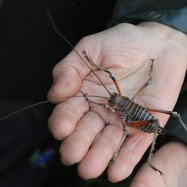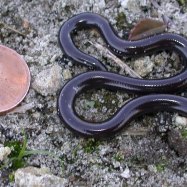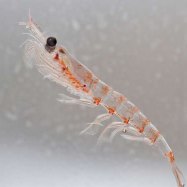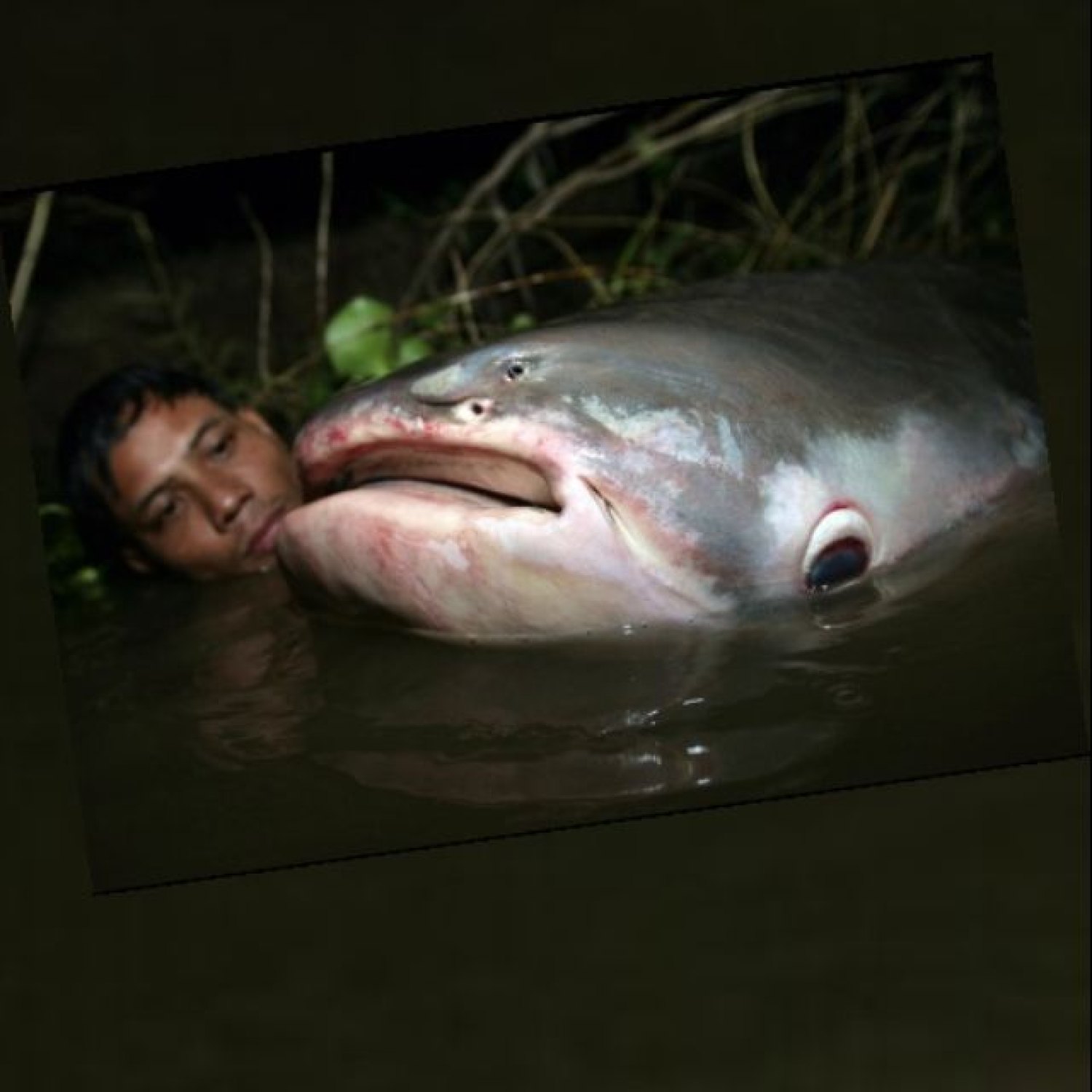
Mekong Giant Catfish
Up to 10 feet
The Mekong Giant Catfish is one of the largest freshwater fish in the world, with a maximum length of up to 10 feet! Found in the Mekong River, this fish belongs to the Pangasiidae family and has a streamlined and elongated body. Fascinating and impressive, this fish is a must-see for any animal lover! #MekongGiantCatfish #Pangasiidae #MekongRiver #freshwaterfish
Animal Details Summary:
Common Name: Mekong Giant Catfish
Kingdom: Animalia
Habitat: Freshwater
The Unique and Magnificent Mekong Giant Catfish: The Gentle Giant of Southeast Asia
The Mekong River is the 12th longest river in the world. It spans over 4,000 kilometers and supports the lives of millions of people, providing them with water, food, and transportation. But the river also holds a secret, a hidden treasure that roams its waters. This gentle giant is known as the Mekong Giant Catfish Mekong Giant Catfish.With a scientific name of Pangasianodon gigas, the Mekong Giant Catfish is the largest freshwater fish in the world. It is commonly found in the Mekong River and is considered a national treasure in Southeast Asia, specifically in Cambodia, Laos, Thailand, and Vietnam. This magnificent creature is not just a vital part of the ecosystem, but it also plays a significant role in the cultural beliefs and traditions of the people living along the Mekong River.
In this article, we will take a closer look at the unique and magnificent Mekong Giant Catfish, from its physical characteristics to its ecological importance and cultural significance.
The Kingdom of Mekong Giant Catfish
The Mekong Giant Catfish belongs to the Kingdom Animalia, which includes all animals on the planet. Within this kingdom, the Mekong Giant Catfish belongs to the Phylum Chordata, which includes all animals with a spinal cord. Within this phylum, the Mekong Giant Catfish belongs to the class Actinopterygii, which includes all ray-finned fish.Specifically, the Mekong Giant Catfish belongs to the order Siluriformes, which includes all catfish species. Within this order, it belongs to the family Pangasiidae, which consists of large freshwater catfish species found in Southeast Asia Mini Lop.
The Habitat of the Mekong Giant Catfish
As the name suggests, the Mekong Giant Catfish can be found in the Mekong River, which is also known as the Mae Nam Khong in Thai and Tonle Thom in Khmer. This river is the lifeblood of Southeast Asia, supporting the livelihoods of millions of people. Its waters are rich in nutrients, making it an ideal habitat for this massive fish.The Mekong Giant Catfish is a freshwater fish, which means it can only survive in bodies of water with low salinity levels. It prefers deep pools and fast-flowing waters with muddy bottoms. These conditions allow the fish to hide and ambush its prey, which includes small fish, crustaceans, and aquatic plants.
The Feeding Method of the Mekong Giant Catfish
The Mekong Giant Catfish is an omnivore, which means it consumes both plant and animal matter. As a bottom feeder, it mostly feeds on small aquatic animals and plants found on the river's floor. Its mouth is surrounded by four pairs of barbels, sensory organs that help the fish locate food in murky waters.The Mekong Giant Catfish is also a filter feeder, meaning it consumes food by filtering it through its gills. It has a large mouth and a specialized set of gill rakers that allow it to filter out small organisms, such as zooplankton and phytoplankton, from the water.
The Geographical Distribution of the Mekong Giant Catfish
The Mekong Giant Catfish is native to the Mekong River in Southeast Asia, specifically in Cambodia, Laos, Thailand, and Vietnam. However, due to its popularity in the aquarium trade, it has been introduced to other countries such as the United States, where it is bred in captivity.Within the Mekong River, the Mekong Giant Catfish can be found in various sections, including the lower basin of the river near the Tonle Sap Lake in Cambodia, the upper stretch of the Mekong near the Khone Falls in Laos, and the Thai-Lao border.
The Magnificent Appearance of the Mekong Giant Catfish
The Mekong Giant Catfish is truly a sight to behold. Its body is streamlined and elongated, allowing it to move swiftly in the water. It has a cylindrical shape with a long and slender tail, which helps propel the fish through the water.On average, the Mekong Giant Catfish can grow up to 10 feet in length and weigh up to 700 pounds. However, some specimens have been reported to reach up to 16 feet in length and weigh over 1,000 pounds.
When it comes to coloration, the Mekong Giant Catfish is mostly dark gray or black on the dorsal side, while its ventral side is lighter. This coloration serves as a form of camouflage, allowing the fish to blend in with its surroundings and avoid predators.
The Cultural Significance of the Mekong Giant Catfish
Apart from its ecological importance, the Mekong Giant Catfish also holds a deep cultural significance in Southeast Asia. In Cambodia, it is believed that the Mekong Giant Catfish is a sacred and mythical creature, often referred to as the "king of the river." It is said that the fish brings good luck and prosperity to those who catch it, and it is believed to possess healing powers.In Thailand, the Mekong Giant Catfish is considered a national symbol and is featured on their 100 baht currency note. It is also an essential part of their traditional New Year's celebrations, where it is released back into the river as a symbol of new life and good luck.
In Vietnam, the Mekong Giant Catfish is a rare and prized catch, often reserved for royalty. Its meat is considered a delicacy and is served in high-end restaurants. However, due to overfishing and habitat destruction, the Mekong Giant Catfish is now a protected species in Vietnam.
The Conservation Efforts for the Mekong Giant Catfish
Despite its cultural significance, the Mekong Giant Catfish is facing numerous threats to its survival. Overfishing, habitat destruction, and dam construction have drastically reduced its population, with estimates suggesting a decline of up to 95%.To protect this magnificent creature, various conservation efforts have been put in place. In 2003, a Catch and Release Program was introduced, encouraging fishermen to release any Mekong Giant Catfish caught back into the river. This program has seen some success, with reports of an increase in the fish's population in some areas.
Furthermore, organizations such as the Mekong River Commission are working towards protecting the fish's habitat and advocating for sustainable fishing practices. Additionally, the Mekong Giant Catfish is listed as critically endangered on the International Union for Conservation of Nature (IUCN) Red List, bringing more attention to its conservation needs.
In Conclusion
The Mekong Giant Catfish is a truly remarkable creature, deserving of its title as the gentle giant of Southeast Asia. Its physical characteristics, ecological importance, and cultural significance make it a vital part of the Mekong River ecosystem and the people living along its banks.However, this magnificent fish is facing numerous threats to its survival, making conservation efforts crucial in ensuring its continued existence. It is our responsibility to protect and preserve the Mekong Giant Catfish, not only for its cultural significance but also for the well-being of the Mekong River and the communities that rely on it.

Mekong Giant Catfish
Animal Details Mekong Giant Catfish - Scientific Name: Pangasianodon gigas
- Category: Animals M
- Scientific Name: Pangasianodon gigas
- Common Name: Mekong Giant Catfish
- Kingdom: Animalia
- Phylum: Chordata
- Class: Actinopterygii
- Order: Siluriformes
- Family: Pangasiidae
- Habitat: Freshwater
- Feeding Method: Omnivorous
- Geographical Distribution: Southeast Asia
- Country of Origin: Cambodia, Laos, Thailand, Vietnam
- Location: Mekong River
- Animal Coloration: Dark gray or black on the dorsal side, lighter on the ventral side
- Body Shape: Streamlined and elongated
- Length: Up to 10 feet
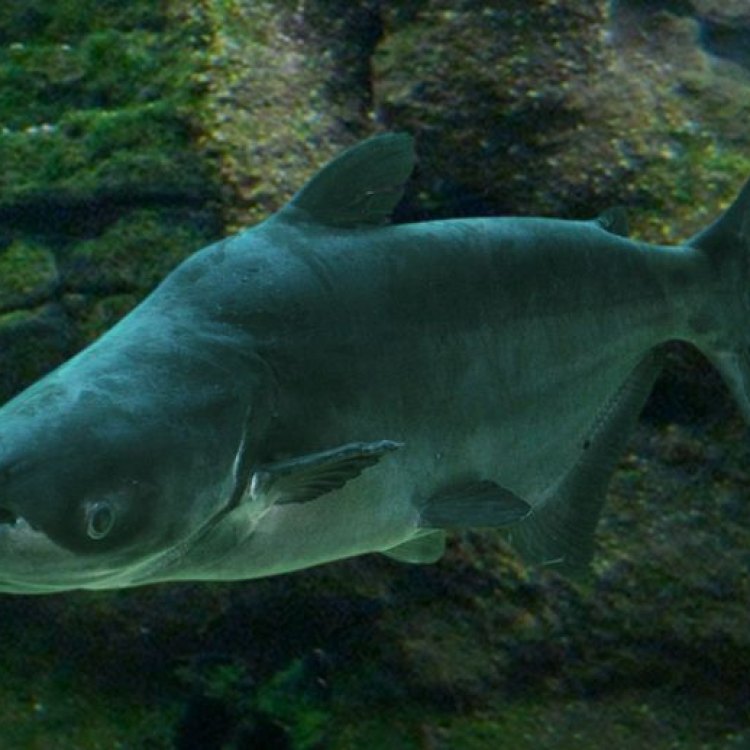
Mekong Giant Catfish
- Adult Size: Between 6.6 and 10 feet
- Average Lifespan: Around 20 years
- Reproduction: Sexual
- Reproductive Behavior: Unknown
- Sound or Call: No sound production
- Migration Pattern: Long-distance migration to spawn
- Social Groups: Solitary
- Behavior: Sedentary
- Threats: Overfishing, hydroelectric dam construction
- Conservation Status: Critically Endangered
- Impact on Ecosystem: Important for maintaining the ecological balance of the Mekong River
- Human Use: Valued for sport fishing and as a food source by local communities
- Distinctive Features: Largest freshwater fish species in the world
- Interesting Facts: One of the largest and most endangered freshwater fish species
- Predator: Humans, other large fish
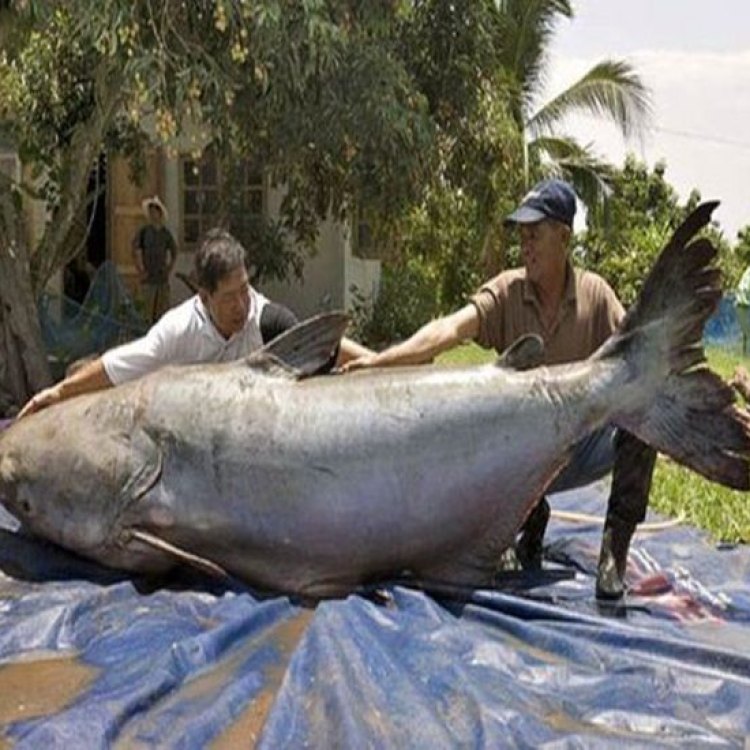
Pangasianodon gigas
The Magnificent and Endangered Mekong Giant Catfish: The Largest Freshwater Fish in the World
Imagine diving down into the murky depths of the Mekong River in Southeast Asia and coming face to face with a massive creature, its silver scales reflecting the sunlight filtering through the water. This creature is the Mekong Giant Catfish, known for its enormous size, critically endangered status, and significant role in the ecosystem.With a Latin name of Pangasianodon gigas, the Mekong Giant Catfish is one of the most fascinating and unique creatures in the world. Let's take a closer look at this incredible fish and the importance of conserving this species PeaceOfAnimals.Com.
A Record Breaking Fish
The Mekong Giant Catfish is truly a giant, with adult sizes ranging between 6.6 and 10 feet, and can weigh up to a whopping 660 pounds! These measurements make it one of the largest freshwater fish species in the world and the heaviest recorded freshwater fish ever caught.The Mekong Giant Catfish has an elongated body and a wide head with a slightly protruding snout. Its body is mostly brownish-gray, with a lighter belly and large, round scales. These scales are said to have a metallic sheen, giving the fish a striking appearance.
Interestingly, the Mekong Giant Catfish's body is covered in a layer of mucus that helps protect its skin and allows it to glide through the water with ease. This mucus layer also gives the fish a "slimy" texture when touched.
A Short Life Span
Despite its massive size, the Mekong Giant Catfish has a relatively short lifespan of around 20 years. This may seem long, but considering the average lifespan of other large fish species, such as whales, it is quite short Mullet Fish.The exact reason for their shorter lifespan is unknown, and research on the species is still limited due to its endangered status.
An Unknown Reproduction Process
The Mekong Giant Catfish is a sexual species, meaning that it requires a male and a female to reproduce. However, not much is known about their reproductive behavior. Researchers have yet to observe or study the process of mating and spawning in the wild.What we do know is that the Mekong Giant Catfish is an egg-laying species, with the female laying eggs that are fertilized externally by the male. The eggs then develop and hatch into juvenile catfish, starting the cycle of life for this extraordinary species.
No Sound Production or Social Groups
One interesting fact about the Mekong Giant Catfish is that it does not produce any sound or call, making it a quiet and mysterious creature. Researchers have not observed the fish making any vocalizations, and it is unknown if they use other communication methods.As a solitary species, the Mekong Giant Catfish does not form social groups or have any specific behaviors that indicate social interactions. They are sedentary creatures, meaning they prefer to stay in one place rather than move around.
However, during the breeding season, there have been reports of the fish undergoing long-distance migration in order to spawn.
Threatened by Human Activities
As with many endangered species, the Mekong Giant Catfish faces numerous threats, the most significant one being human activities.Overfishing is a major threat to this species, with its large size and rarity making it a prized catch for sport fishermen and a valuable food source for local communities. The demand for the Mekong Giant Catfish has led to unsustainable fishing practices, where large numbers of adult catfish are caught and killed, leaving behind fewer reproductive individuals to maintain the population.
Additionally, the construction of hydroelectric dams on the Mekong River has created a barrier for the fish's long-distance migration to spawn. This has vastly reduced the catfish's breeding success, further endangering the species.
A Critical Endangered Status
The Mekong Giant Catfish's population has declined significantly over the years, leading to its current critically endangered status. In 2003, the International Union for the Conservation of Nature (IUCN) listed the species as critically endangered, and it has remained in this category ever since.Efforts are being made to conserve this majestic fish, including the establishment of protected areas, stricter fishing regulations, and conservation programs in local communities. However, the Mekong Giant Catfish's population continues to decline, and urgent action is needed to protect this irreplaceable species.
A Vital Role in the Ecosystem
The Mekong Giant Catfish plays a crucial role in maintaining the ecological balance of the Mekong River. As a top predator, it helps control the population of smaller fish species, preventing any one species from dominating the ecosystem.In addition, the catfish's feeding habits contribute to nutrient cycling, which is essential for the river's ecosystem. Its large size also makes it a vital food source for other large fish species, ensuring a healthy and diverse aquatic community.
Valued and Threatened by Humans
The Mekong Giant Catfish is not only valuable to the ecosystem but also holds great cultural significance for the people living along the Mekong River. Local communities have relied on the fish as a food source for generations, and it is also a popular species for sport fishing.Sadly, this value has contributed to the species' decline as overfishing and unsustainable fishing methods continue to threaten their survival. It is crucial to strike a balance between human use and conservation efforts to ensure the Mekong Giant Catfish's survival for future generations.
The Endangered Icon of the Mekong
In conclusion, the Mekong Giant Catfish is a remarkable and endangered species that needs our attention and protection. As the largest freshwater fish in the world, it holds great ecological and cultural importance, and its decline would have a significant impact on the Mekong River's delicate ecosystem.Efforts must be made to conserve this species through sustainable fishing practices, habitat protection, and community involvement. With proper conservation measures in place, we can hope to see these giant creatures thriving once again in the Mekong River.
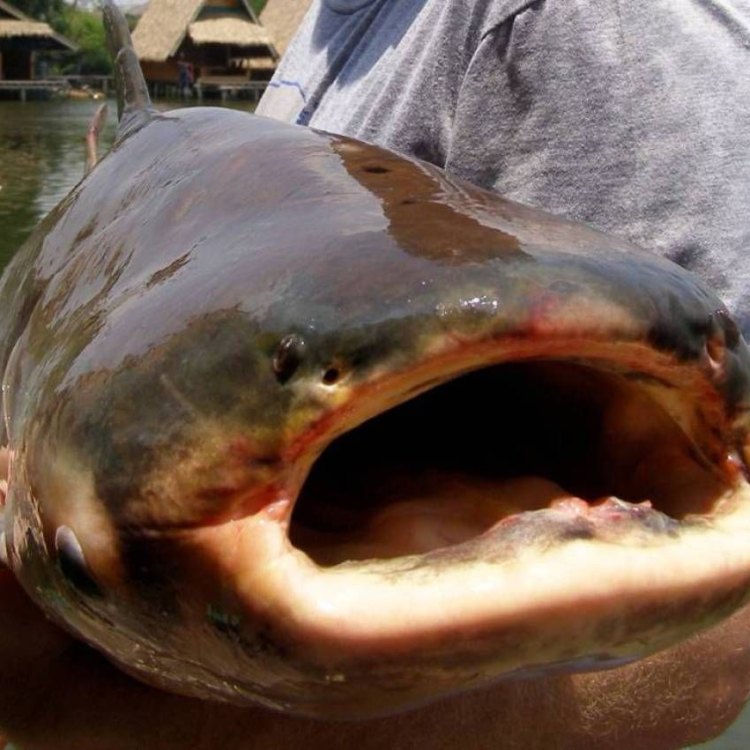
The Unique and Magnificent Mekong Giant Catfish: The Gentle Giant of Southeast Asia
Disclaimer: The content provided is for informational purposes only. We cannot guarantee the accuracy of the information on this page 100%. All information provided here may change without prior notice.

